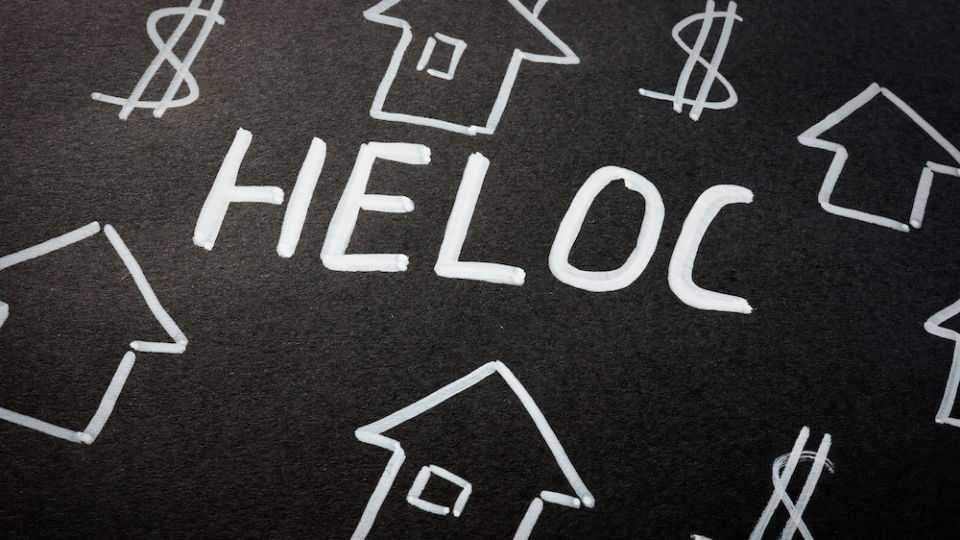
HELOC Interest Rates: A Complete Guide
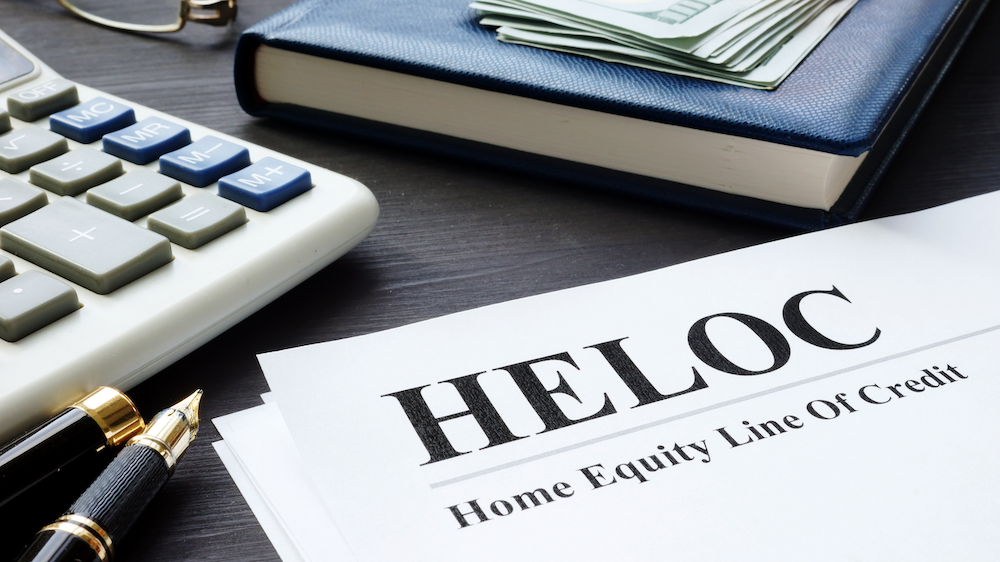
The process of becoming a homeowner is a long uphill battle in many respects, but building home equity provides you with a lot of perks. One of the biggest benefits is that you can borrow money against your equity when you need it the most.
Today, we’ll take a closer look at HELOCs, which are a popular way to access home equity for renovations, medical expenses, tuition, or even large purchases. Keep reading for a deep dive into interest rates, HELOC pros and cons, and everything else you need to know to make informed financial decisions.
What Is A HELOC?
HELOC is short for home equity line of credit. A HELOC is a type of loan that you can secure for a variety of purposes. With this type of loan, you borrow against your home equity, which is how much of your home that you own.
Let’s say that you have property worth $250,000, but you still have a mortgage balance of $100,000. Your home equity stands at $150,000. Lenders will usually loan you up to 85% of the appraised value of the property minus your mortgage balance. Using this example, you could potentially open a line of credit up to $112,500.
Here’s that laid out in a formula:
$250,000 x 85% = $212,500
$212,500 - $100,000 = $112,500
$112,500 credit limit
What makes a home equity line of credit unique is that you can keep replenishing your line of credit. If you borrow $50,000 of that $112,500 and pay it off, you can keep borrowing money as needed throughout your draw period. The draw period varies from lender to lender, but in most cases, it’s 5-10 years.
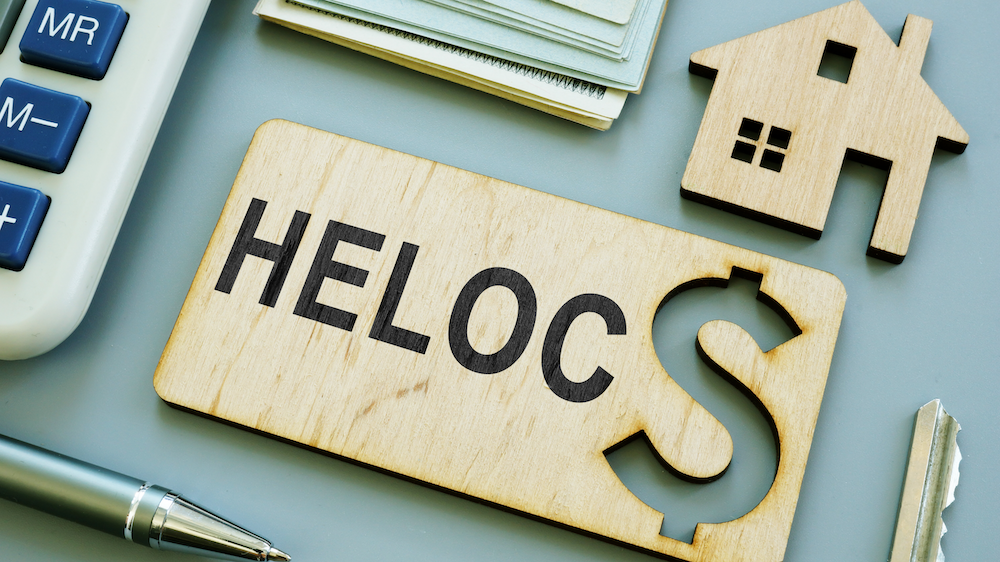
Home Equity Loans vs Home Equity Line Of Credit
Many people confuse home equity loans and home equity lines of credit. They may have similar names and plenty of overlaps, but they are two distinct loan types.
First, let’s talk about the things they have in common. Both home equity loans and HELOCs borrow against the equity of your home. Both also use your home as collateral – if you can’t make your payments, the lender can seize your property.
There are major differences, though. A home equity loan allows you to borrow a one-time lump sum. This is compared to a home equity line of credit which allows you to borrow as much money as you need during your draw period, as long as you keep within your credit limit.
Another difference is in the repayment terms. A home equity loan will often have fixed monthly payments and interest rates, while a HELOC’s payment amount and interest rate can change from month-to-month. Plus, with a home equity line of credit, you only pay interest on the amount that you’ve borrowed, not your entire line of credit. We’ll talk more about HELOC’s variable interest rates and how they’re paid in a later section.
Monthly payments on home equity loans last for the entire term, which is generally anywhere from 1 to 30 years. But a HELOC is actually divided into two phases: the draw period and the repayment period. You withdraw money during the draw period, and the only financial obligation you have is paying off the interest rates. Once the draw period ends, you can’t borrow any more money, but you’re still on the hook for the principal amount plus interest rates.
| Home equity loans | Home equity lines of credit | |
| Funds | Lump-sum | Borrow as much as you need, whenever you need, up to the line of credit limit |
| Interest rates | Fixed rate; paid every month along with principal Rates usually range from 3.0%-9.25% | Variable rate; interest-only payments during the draw period Rates usually range from 1.99%-7.24%, with some as high as 21% |
| Loan term | 1-30 years of fixed payments | 5-10 years draw period;10-20 years repayment period |
| Closing costs | Similar to mortgage closing costs at 2-5% of the loan amount | Lower than home equity loans, if there are any at all |
| Pros | Predictable monthly payments | Flexibility in drawing funds |
| Cons | Higher interest rates | High potential to default |
| Best for | Big purchases where you know exactly how much you want to borrow | Ongoing access for unpredictable expenses |
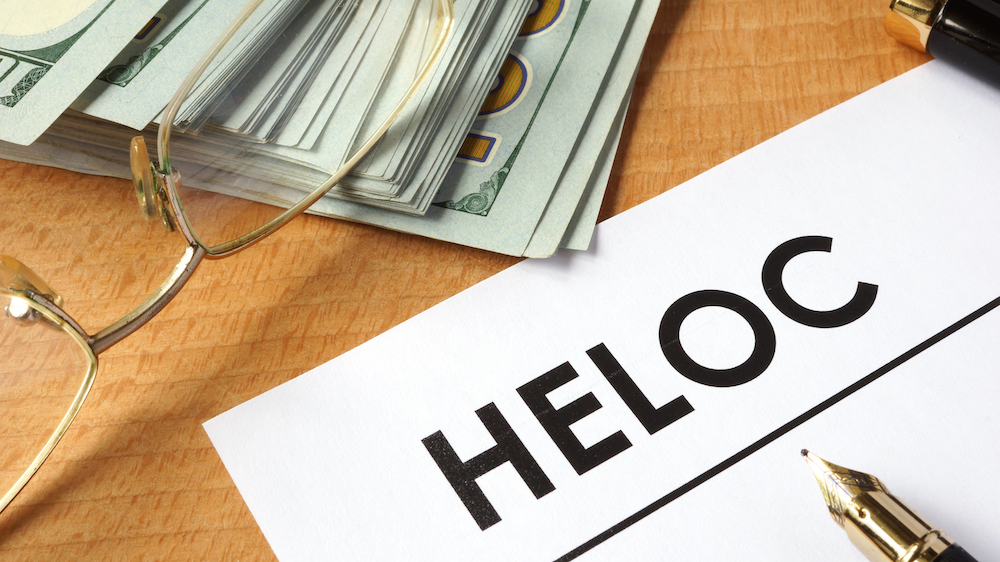
Advantages Of A Home Equity Line Of Credit
If you need to borrow money for something, a home equity line of credit can be a great way to secure funds. Here are some of the reasons you should consider a HELOC.
Consolidated Debt
You can consolidate debt by paying off your other loans (e.g. credit cards, mortgage, etc.) using the money you get from a HELOC. This makes it a lot easier to keep track of your financial obligations since you’re only concerned about a single monthly payment schedule and interest rate. Plus, HELOCs generally have much lower interest rates than credit cards, home equity loans, and other types of debt, so you save money in the long run too.
Tax Deductions
If you use a home equity line of credit to pay for renovations, home expansions, or your mortgage, you can deduct it on your taxes. A single filer can deduct up to $50,000 a year in interest payments, and that number doubles for joint filers.
Low Upfront Cost
Closing costs can stack up to as much as 5% of the loan amount. It may seem like a small percentage, but with most loans in the tens or hundreds of thousands, that can be a huge additional expense. Many HELOC lenders charge little to no closing costs on top of your loan.
Lower Interest Rates
Compared to high-interest credit cards, home equity loans, and traditional mortgages, HELOCs are known to have much lower rates. This is because it’s a secured loan with your home as collateral. They also use a variable rate, which means that your interest rate varies depending on market conditions, with a cap, of course. You could potentially get lower rates compared to fixed rate loans this way.
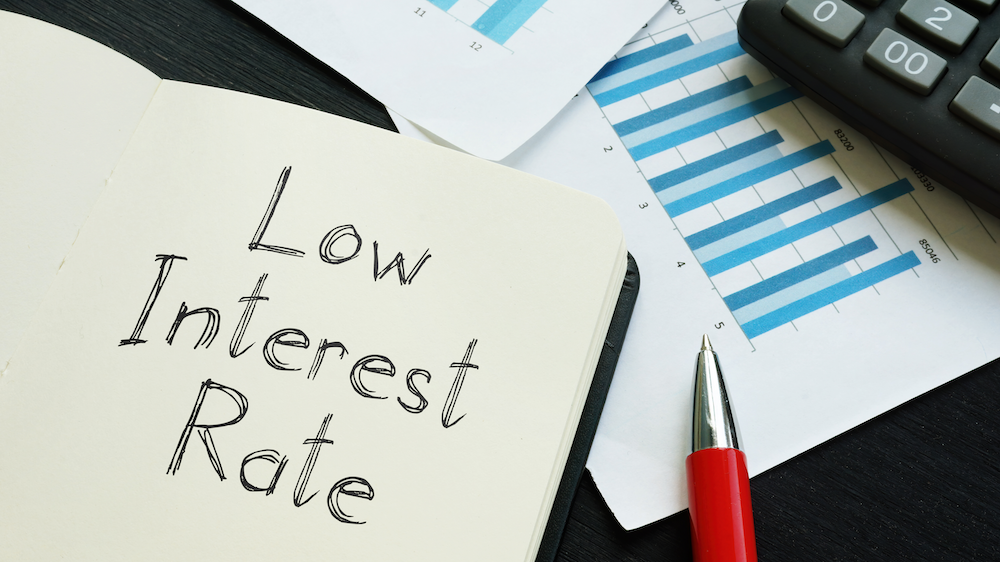
Large Borrow Amounts
Secured loans like HELOCs allow you to borrow significantly more money than if you go for traditional loans. How much you can actually borrow, however, depends on factors like the appraised value of your home, how much home equity you have, and your credit score.
Draw Period
The draw period is a unique element of this line of credit. During this 5 to 10-year period, you can withdraw as much as you need to up to your limit. If you pay back the amount, your line of credit replenishes and you can use it again. Many lenders also allow you to only pay interest, but we’ll discuss how this can backfire in the next section.
Use Case Flexibility
With a mortgage, you can only borrow money for home-related costs like buying or renovating property. But with a HELOC, you can use the funds for almost anything, like medical expenses, education expenses, and large purchases.
Disadvantages Of A Home Equity Line Of Credit
Whether it’s a home equity loan or a HELOC, no debt is “perfect”. There will always be downsides to taking out any kind of loan. Below are some of the reasons you should be cautious about borrowing money using a home equity credit line.
High Financial Risk
Unlike a home equity loan, a HELOC comes with variable rates. Because of this, it can be difficult to budget. You don’t know exactly how much you’ll have to pay from month-to-month. If you’re generally financially unstable, or if market interest rates suddenly surge, you might find yourself unable to make payments.
Lost Home Equity
You’re borrowing against your home equity and putting your property down as collateral. This reduces your ownership in your own home until you pay off the loan.

Potential Balloon Payments
A balloon payment is any amount you owe at the end of a loan period. Let’s say that you still have $10,000 left to pay, but your repayment period is coming to an end. You’ll have to cough up the entire amount in one go. If you make interest-only payments in the draw period, the likelihood of a balloon payment increases.
Thoughtless Spending
Having easy access to cash can encourage reckless spending, especially in those who are less financially-disciplined. For example, if you use your HELOC to pay off credit card debt, you might make more purchases on your card, putting you in even deeper debt.
Minimum Draws
Some lenders may require a minimum draw amount, usually in the $10,000-$25,000 range. You might end up withdrawing more than needed just to meet the required number, increasing your debt unnecessarily.
Additional Fees
Like with all loans, there are fees that you need to pay off on top of your principal amount and interest. This includes a loan origination fee, an annual fee or maintenance fee, closing costs, and the like. Make sure to factor in these charges before opening a credit line because they could easily stack up.
Credit Score Impact
Falling behind on your monthly payments will definitely impact your credit score. Compounded with the constantly fluctuating rates, HELOCs could quickly become unaffordable for some borrowers.

Early Out Penalties
Most HELOCs do not have a prepayment penalty, but they do have early cancellation fees if you decide to close your line of credit before the end date in your agreement. This could be a percentage charge, but it’s most often a fixed sum regardless of your balance.
Should You Get A HELOC?
The short answer to this question is “it depends”.
There are many cases in which a HELOC could be right for you. If you want to renovate your home, a HELOC is a good way to fund it, especially since home improvement uses are tax-deductible. This line of credit is also a great idea if you have ongoing project expenses because you can take out money as needed.
But if your financial situation isn’t stable, taking out a home equity line of credit could put you into debt that you can’t get out of. And if you can’t make your monthly payments, you’ll lose your collateral: your home.
How Does A Home Equity Line Of Credit Work?
A home equity line of credit works in two phases. In the first phase, the draw period, you can borrow as much money as your limit allows. This period typically lasts five to ten years. If you and the lender agree to an interest-only payment scheme, you won’t even have to pay off the principal amount during the draw period. You can also choose a payment scheme that allows you to pay both the principal and the interest in this phase.
When the draw period is over, you have two options: start the repayment period or extend your HELOC. If you choose the former, you have about 10-20 years (depending on your contract) to pay off the entire amount borrowed plus interest.

Keep in mind that while your monthly payments will be lower, delaying payment of the principal amount will result in a much bigger financial obligation once the repayment period kicks in. A 2014 study found that monthly payments can almost double in some cases.
Although this is usually how it works, the details of your HELOC really depend on the lender. Some may offer a fixed rate, but it will most likely be higher than the variable rate. You could also refinance your home equity line of credit into a home equity loan or traditional mortgage, but that also comes with additional fees.
What Can You Use A Home Equity Line Of Credit On?
While many people use HELOCs to fund a remodel or home expansion, that’s not the only thing you can use it on. In fact, you can borrow money for almost any reason imaginable. This includes:
- Hospital bills and other medical expenses: Since a HELOC is a revolving credit line, they’re a great option for ongoing medical expenses associated with chronic illness.
- Education costs: A home equity line of credit has significantly lower interest rates than a student loan.
- Credit card debt: Some credit cards have notoriously high interest rates. Paying them off with a HELOC can save you money by lowering your interest. However, this doesn’t solve the biggest causes of credit card debt: overspending or lack of income.
- Real estate investments: You can borrow against the equity of your home to finance the purchase of another property. Of course, there’s a lot of risk involved, especially since real estate market values fluctuate.
- Vacations: Yes, some people take out HELOCs to fund their travels. It might be cheaper than racking up a huge credit card bill, but it’s still unnecessary debt. Plus, defaulting on your credit card payments doesn’t result in losing your home.

- Auto purchases: Auto loan rates have recently caught up with HELOC rates, so using a home equity line of credit to pay for a car is significantly less common. We wouldn’t recommend doing this since your vehicle will depreciate in value, and 10-20 years down the line, you might be stuck paying for something that’s no longer valued at the same amount.
HELOC Eligibility
The eligibility requirements for a home equity line of credit and a home equity loan are similar. To qualify for home equity lines of credit, you’ll need:
- A minimum credit score of 620: Good credit is absolutely essential when opening a HELOC because lenders want to be sure that you won’t miss a monthly payment. However, the importance of your credit score in your interest rate and lending power isn’t the same across the board. Some lenders care most about your credit score, while others will look at it as just one factor among many. Different lenders may also have different minimums, with some requiring scores as high as 740+.

- A maximum debt-to-income ratio of 43%: Your debt-to-income ratio is your monthly income minus your monthly payments and expenses. For example, if you earn $4,000 a month and have $1,500 worth of expenses every month, that’s a debt-to-income ratio of 37.5%, well under the 43% maximum. This still varies from lender to lender, with some maximum DTIs going up to 50%.
- At least 15-20% equity in your home: You need to own at least 15% (or, in some cases, 20%) of your home before a lender will even think about opening a line of credit for you. You may need an appraisal to estimate the value of your home first.
These eligibility requirements are, of course, merely the industry standard. If you want to know exactly what qualifications you need to secure a HELOC, you should ask your lender.
The Home Equity Line Of Credit Application Process
Getting a home equity line of credit is a lot easier than most people think. In many ways, it’s quite similar to the process of applying for a home equity loan or even a traditional mortgage. You may even be able to apply for a HELOC completely online.
- Make sure you’re eligible. It would be a waste of time to apply for a HELOC only to get rejected by lenders because you don’t meet the minimum requirements. You need a good credit score and a certain amount of equity in your home first. If you don’t have these yet, work toward them before anything else.
- Shop for a HELOC lender. Surveying your options is the best way to get favorable rates. Approach at least 3-5 lenders to get a quote, comparing different products and services as you go. Keep an eye out for any promotions for a lower monthly payment, annual fee waiver, better rates, higher loan amount, more flexible requirements, etc.
- Put your documents together. You’ll need a wide range of documents to complete your HELOC application. This includes your employment history, income, and estimated property value. Once you submit all of the initial information, the lender will reach out to let you know if you’ve secured the HELOC or not.
- Verify your application. Verification documents act as your proof of income/payment ability. You need to submit these after you’ve accepted a lender’s loan offer. Take note that a lender will do a hard credit check, potentially impacting your FICO score.
- Get your funds. You can’t access your credit right away, but it shouldn’t take long for you to be able to withdraw funds. After the initial waiting period, you can borrow money any time as long as you don’t go over your credit limit.
A Note About The Coronavirus Pandemic
As of this writing, the real estate market has suffered greatly because of the pandemic. This means that interest rates are significantly lower than usual, which makes it a good time to take out a HELOC.
However, there’s a major issue with this: lenders are much stricter about eligibility requirements, if they’re even accepting applications at all. Many banks and financial institutions have temporarily suspended HELOCs. If you can find one that’s still taking applications, you should secure it now. Get a fixed rate, if at all possible, to take advantage of today’s market conditions.

What Is Considered A Good HELOC Interest Rate?
The average HELOC interest rate for 2020 (as of June) is at around 4.37%. Most banks will charge you an interest rate based on the prime rate – which directly correlates with the federal funds rate – plus a margin. This margin is computed based on several factors, such as:
- Market conditions: HELOC rates are based primarily on the prime rate. The prime rate is based on the rates that the Federal Reserve sets. Since the United States is in a recession right now, rates are at an unusually low rate. This caused a huge influx of borrowers, resulting in many banks closing HELOC applications for the time being.
- Mortgage balance: The more equity you have in your home, the more likely you’ll get a better rate. This is because a higher loan-to-value ratio is a much bigger risk for financial institutions to take on.
- Credit score: It makes sense that your rates would be affected by your credit score, as with all other types of credit. Generally, higher credit scores equal better rates, but it isn’t the end-all-be-all in some cases. Some banks will loan you money, even if you don’t meet minimum credit score requirements, as long as you have enough home equity.
- Location: Home equity lines of credit rates in New York are different than rates in South Carolina. The highest average interest rate can be found in New Jersey and South Dakota, while the lowest can be found in Massachusetts and West Virginia. The difference is an entire percentage point – 4.8% compared to 3.8%
However, interest rates are just one part of the puzzle. Lower rates don’t always equal a better offer. You also have to consider the big picture – what is the rate cap? Is this an introductory rate that might increase over time? What is the draw period? Are there any “hidden fees”? Can the lender loan you the amount you need?
Canceling A HELOC
What happens if you have just opened a home equity line of credit but realize that you no longer want/need it? Thankfully, federal law allows you to cancel your credit contract, absolutely penalty-free, within three business days. One major requirement here is that the collateral for the HELOC must be a primary residence, not a vacation home.
If you choose to cancel, you have to send your cancellation request in writing. The lender has to return your money within 20 days; you don’t have to return any funds you’ve received until your home is proven to no longer be collateral.
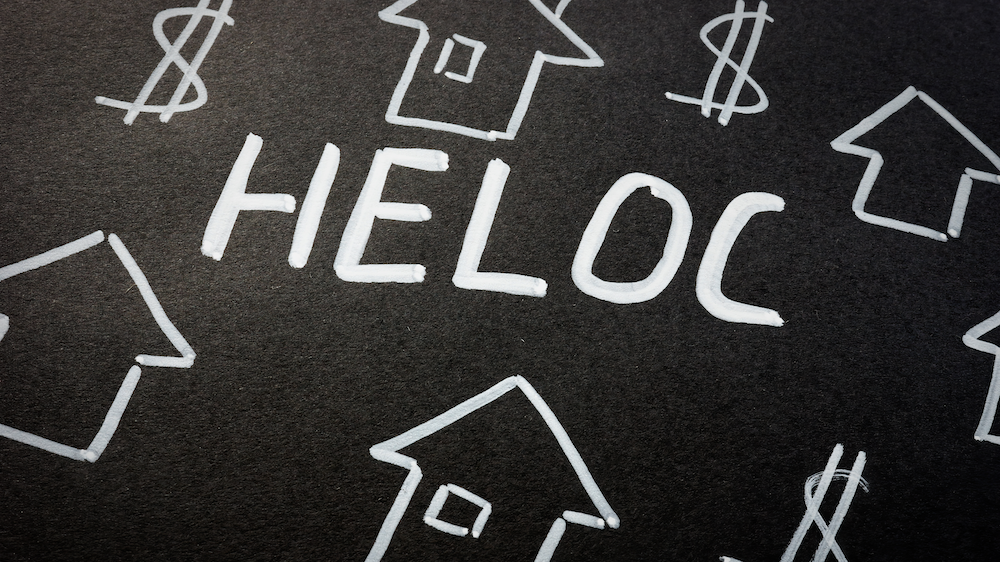
Where To Find HELOC Lenders
Below is a table of some of the biggest HELOC lenders in the US. Keep in mind that this is just a snapshot, not the whole picture. There are plenty of other things to consider when choosing a lender, like how much the annual fee is and whether there are any perks.
It should also go without saying that this is not meant to be a comprehensive list, and some of the lenders below may not operate in your state. Conduct your own research so that you know which options are actually available to you.
| Lender | Interest rate | Eligibility | Payment terms | Loanable amount |
| Chase Bank | 3.75%-6.26%Max. 21% | - | 10-year draw,20-year repayment | $50,000 to$500,000 |
| Bank of America | Starts at 4.32% | - | 10-year draw,20-year repayment | $25,000 to$500,000 |
| Citibank | 4.09%-6.99%Max. 18% | - | 10-year draw,20-year repayment | $10,000 to$1 million |
| Figure | Starts at 3.49% | Minimum 640 credit score | 5-30 years | $15,000 to $150,000 |
| Fifth Third Bank | 3.15%-8.5%Max. 25% | - | 10-year draw,20-year repayment | $10,000 to $500,000 |
| TD Bank | 3.99%-18% | Minimum 740 credit score | - | Starts at $25,000 |
| Navy Federal Credit Union | 5%-18% | - | 20-year draw,20-year repayment | $10,000 to $500,000 |
| Citizens Bank | 3.49%-21% | Minimum 640 credit score | 10-year draw,15-year repayment | Starts at $17,500 |
| Flagstar Bank | 3.99%-21% | - | 10-year draw,20-year repayment | $10,000 to $500,000 |
| BMO Harris Bank | Starts at 3.5%Max. 18% | Minimum 700 credit score | 10-year draw,20-year repayment | $25,000 to $150,000 |
| PenFed Credit Union | 3.75%-18% | Minimum 620 credit score | 10-year draw,20-year repayment | $25,000 to $500,000 |
Risky HELOC Lending Practices You Need To Know
You should always be wary of lenders who seem too good to be true. These people often try to take advantage of people who are less financially literate, older, or don’t meet most minimum HELOC requirements. Here are some red flags you need to watch out for:
- Refinancing: If the lender keeps advising you to refinance your HELOC with them (which comes with more fees), they may be doing it to get more money out of you.
- Additional charges: Notice if the lender is tacking on any unnecessary charges like insurance.
- Transparency issues: Is the lender upfront about how much to expect your monthly payment to be? And is it clear to you how much you’ve paid off and how much you still owe? If not, that’s a red flag.
- Bait and switch: You agree to one set of terms and rates, but then the lender raises the monthly payment amount right before you sign the contract.
- Equity stripping: The home equity line of credit limit is based on your total equity instead of your ability to make the monthly payment. This could fast-track you into crippling debt, causing you to lose your home.
- Home improvement loans: Do not agree to any contracts without looking over the papers closely. There have been cases of contractors working with lenders to exploit unsuspecting homeowners, and then footing them with a high bill or even leaving the work unfinished.
- Other non-traditional loans/terms: Look out for balloon payments or too-low minimum monthly payments. These could snowball and make it impossible for you to pay off your HELOC, basically forcing you to give up your home.

How To Get More Favorable Home Equity Line Of Credit Interest Rates
Here are some tips to get you the best interest rates possible:
- Don’t just look at major banks for your potential lender. Look at community organizations, credit unions, and online lenders as well.
- Get your free credit report so that you know exactly what your FICO score is. Knowing your financial standing is the first step toward good credit, which is essential if you want to take out a home equity line of credit.
- Rate caps are just as important as interest rate. A low rate cap can protect you from a sudden surge in rates.
- If you have a relatively low risk tolerance, consider a fixed rate payment scheme or another loan type (e.g. home equity loans) altogether.
- Don’t make a decision right away. Banks often offer discounts and other promotions throughout the year.
- If you already have a relationship with a local financial institution, check to see if they can offer you lower rates as a member.
- Set up automatic payments. Lenders usually offer a discounted rate if you do this.
- If you’re financially capable, opt for shorter terms. Longer repayment periods may lower your monthly payment amount, but the interest will stack up over time and come out significantly more expensive.
- Don’t be scared to negotiate terms with your lender.
Conclusion
A home equity line of credit can be really useful when you need extra cash on hand. A HELOC often has better rates than a home equity loan, traditional mortgage, or credit cards, so it’s a good choice for people who don’t want to take on too much debt.
Our team is more than ready to help you get the best possible HELOC rates and terms. Contact Wesley LLC today to learn more about our home equity line of credit services!